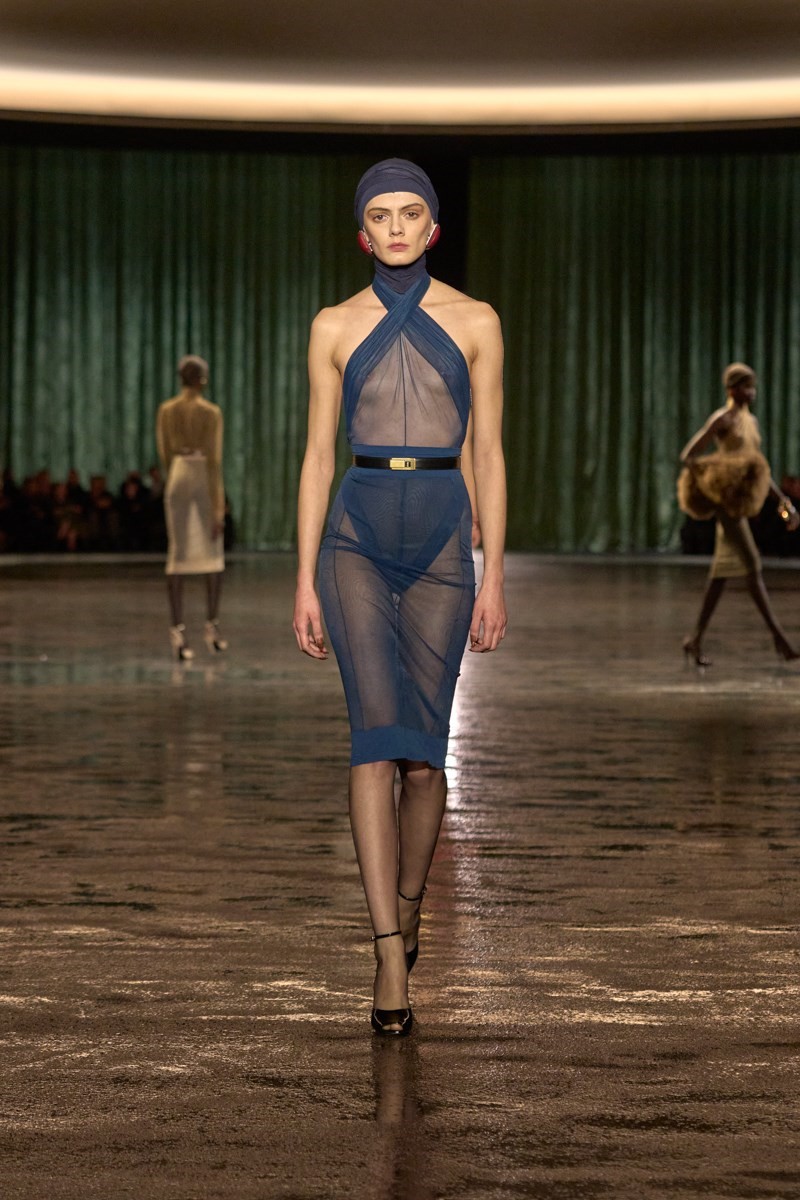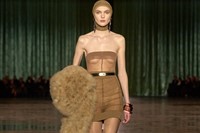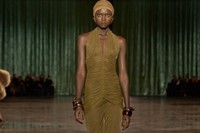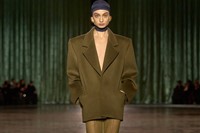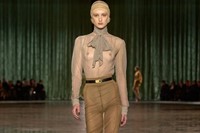Inside the venue of the Saint Laurent Autumn/Winter 2024 show, the air hung heavy with the scent of patchouli, myrrh, and vanilla, the original formula of Opium from 1977. Back then, publicised with a tagline that read “Pour celles qui s’adonnent à Yves Saint Laurent” – “For those who are addicted to Yves Saint Laurent” – Opium became one of the first examples of fashion cancel culture, protested by addiction rights groups upon its launch. It illustrates the fact that, before he became canonised as the grand master of French couture, Yves Saint Laurent was one of fashion’s greatest provocateurs, whose career is credited with a litany of fashion firsts.
Anthony Vaccarello is a provocateur too: he wants to push buttons with his shows, and understands the power of a frisson of shock. Commercial? Not what a Saint Laurent show is about – hence the pointed absence of handbags, despite them being the bedrock of any modern luxury goods house. And hence the fact that, rather than offering a merchandised array of wide-ranging but (potentially) insipid product, Vaccarello uses his shows as a platform to expound on a Big Idea, to craft an image and, maybe, to spin a dream.
But first let’s talk about how Yves Saint Laurent himself explored those kinds of ideas, what he created to provoke, and what he did first. A notable first Saint Laurent is credited with is the first sheer blouse, scandalously revealing women’s breasts within a haute couture salon in 1966. Two years later, he created an entirely transparent dress circled at the hips with ostrich fronds. And in 1971, much of the scandal of his Spring/Summer ‘Libération’ show came not from the 1940s references built into the clothes (again a first, this time to evoke retro styles that were controversially evocative for many of the fashions of France’s loathed wartime Nazi occupation, a period few wished to remember, let alone relive). Rather, it originated from the brazen sexuality of the models, their breasts once again wilfully exposed by ruched chiffon, their bodies sensuously encased in diaphanous fabrics, flesh moving. It was also the first time “kitsch” was used, in reference to fashion. Critics sneered. Ring any bells?
The museum that now occupies the former salons of Yves Saint Laurent has an exhibition currently devoted to transparencies – Sheer: The Diaphanous Creations of Yves Saint Laurent is the somewhat uninspiring title, but the pieces on display will blow your mind. So too did this collection – Vaccarello made transparency the focus of this offering, wrapping bodies in fragile, ruched layers of stockingette, delicate veils that somehow managed to evoke an entire house’s history, both in terms of garments and ideology. Actually, there’s a wider history there: Salome’s Dance of the Seven Veils, Marlene Dietrich’s Jean Louis-designed “Naked” dresses created for her 1950 Vegas revues, the ones subsequently ripped off for Marilyn Monroe, Cher and every starlet ever since. Slipstream in some lingerie, sideswipe an 18th-century craze for soaked muslin dresses to resemble Grecian statues that sparked a mini-epidemic of pneumonia to such a degree it was dubbed ‘Muslin fever’, and there’s a whole lot of reference you can read woven into a see-through dress. Never mind the very specific history of Yves Saint Laurent himself, for whom sheer simply equalled freedom, an unabashed, unashamed celebration of femininity. The same was true here.
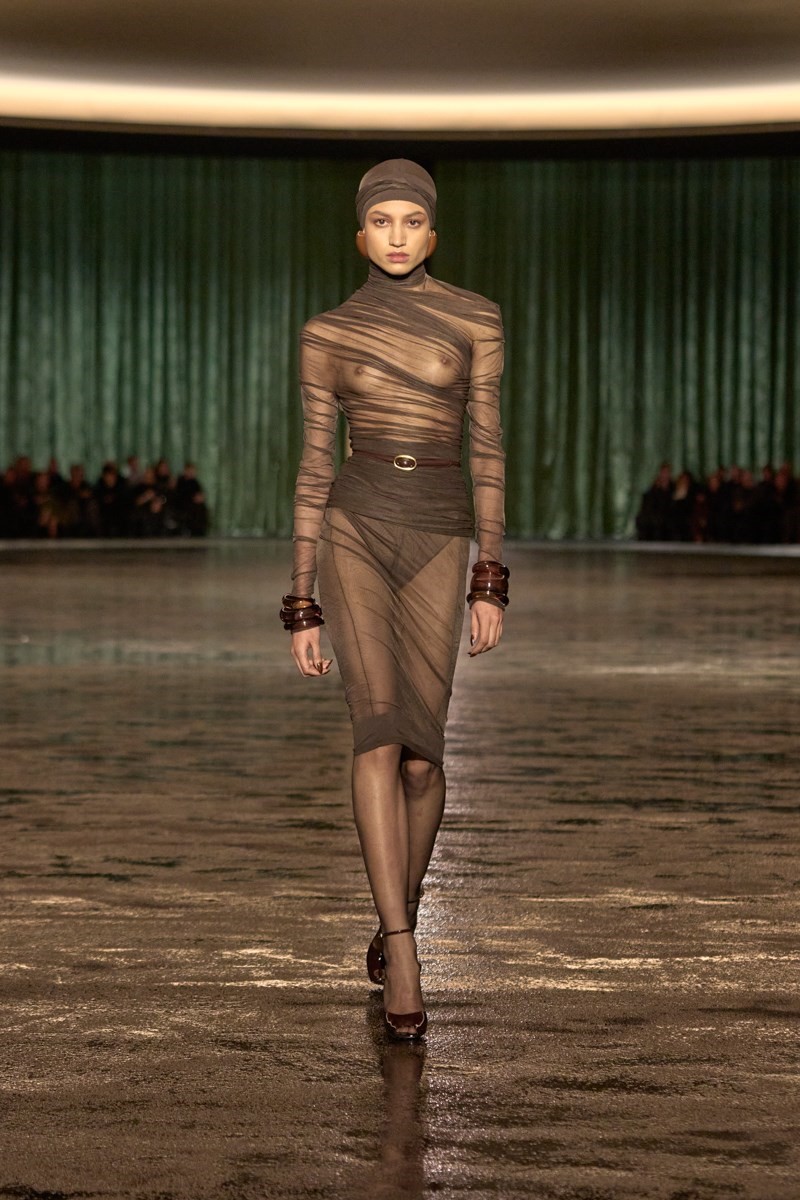
Transparency was the big story. Of course, there were other avenues explored, other clothes which served as contrast, to emphasise the body’s exposure. There were wide-shouldered tailored jackets, a fluid fullness caught in back to blouse at the hip. There were glistening, rubbery iterations of Saint Laurent classics, biker jacket, pea-coat and caban, echoing the radical chic of his 1960 ‘Beat’ collection, another first – the first echo of the cry of the street to resonate in a couture salon. There were eyelash marabou jackets that mimicked the 40s chubbies of the ‘Libération’ collection, and a pair of trouser suits – another Saint Laurent-ism – cut in the kind of slithery crêpe georgette he usually draped into evening gowns.
The nakedness looked all the more naked next to that, the body barely veiled in a cosmetic box of almost-other colours – a bruise lilac, a khaki blush, a lipstick burgundy, mists of colour layered over bare skin. And like stockings, the seams formed graphic traceries of pattern over the topography of the body.
Of course, there will be many who see these clothes as painfully exposing, as emphasising fragility and vulnerability, putting women’s bodies on show for other eyes – “the sex that looks and the sex that is looked at,” to borrow a phrase from the feminist film critic Margaret Walters. But that seems terribly reductive. For Saint Laurent then – and now – transparency is aligned to liberation, for women in charge of their sexualities, their lives, comfortable in their own skin. “Nothing is more beautiful than a naked body,” said Yves Saint Laurent. Anthony Vaccarello evidently feels the same. And for a fashion designer today, that is a proposition that sounds pretty revolutionary.
